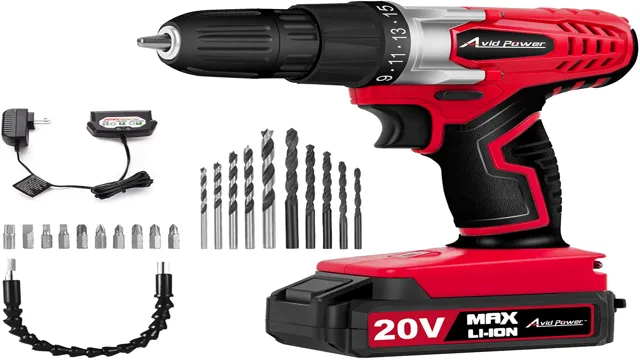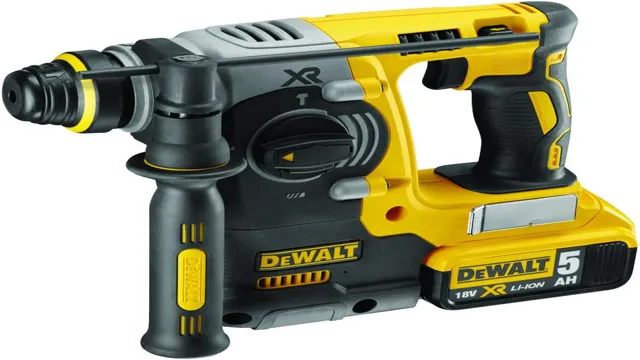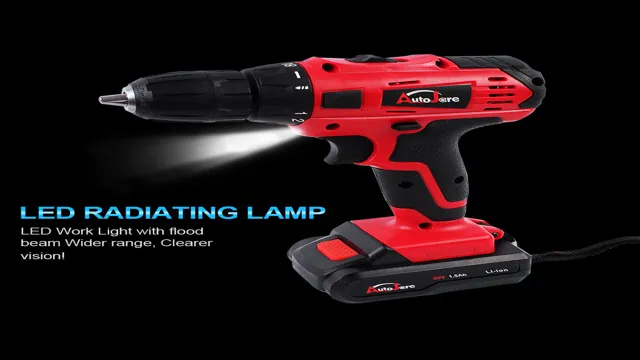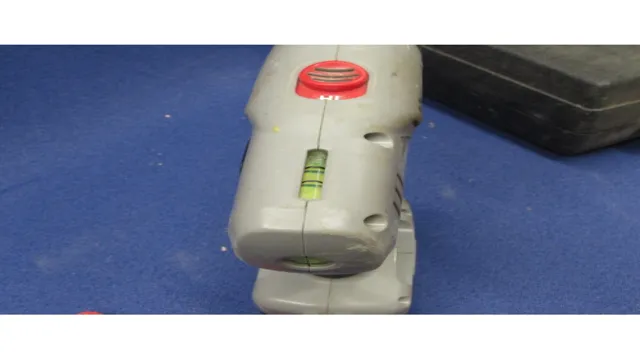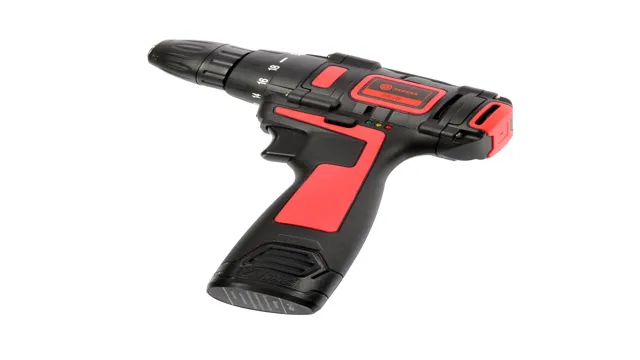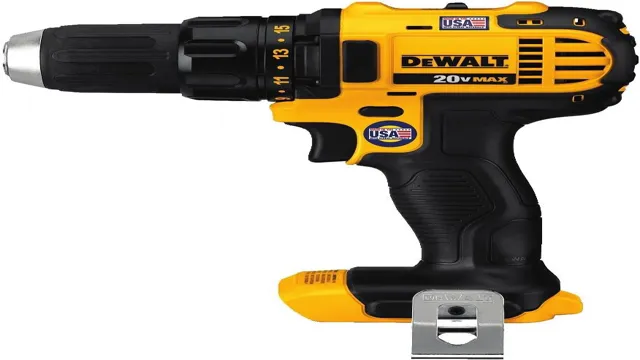What to Do If Cordless Drill Gets Wet: Tips and Tricks for Salvaging Your Power Tool
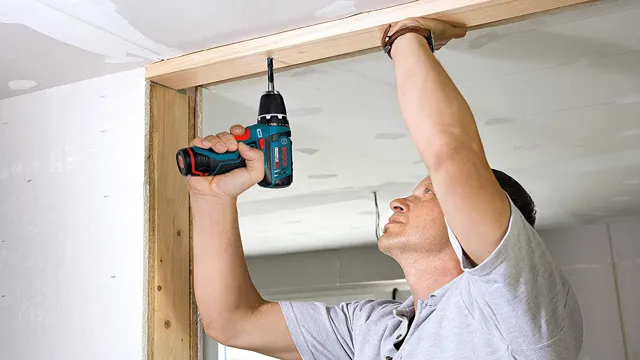
Has your cordless drill recently taken an unexpected dip in water or accidentally gotten wet during a project? Mishaps like these can be frustrating, especially if you rely on your drill for various DIY projects. It’s essential to address this issue as soon as possible, or you could risk severe damage to your cordless drill or even personal injury. Fortunately, there are a few things you can do to recover a wet cordless drill.
In this blog post, we will go over some helpful tips on what to do if your cordless drill gets wet, so you can get back to your DIY projects quickly.
Assess the Damage
Accidentally getting your cordless drill wet can feel like a nightmare situation. The first step is to assess the damage. If the drill is still wet, turn it off, remove the battery, and let it dry completely for at least 24 hours.
Once it’s dry, check for any visible damage such as rust or corrosion. If there are signs of damage, it may have to be replaced. If there is no visible damage, try turning it on and testing its functionality.
If it works fine, then you lucked out! However, if it doesn’t work or is damaged, you may need to purchase a replacement or take it to a professional for repair. In the future, it’s recommended to keep your drill in a dry place and to avoid exposing it to water or moisture to prevent any damage.
Check the Battery
When it comes to battery damage, you need to assess the issue before taking any action. There are a few things that can cause battery damage, including overcharging, undercharging, or dropping your device. If your battery is not holding a charge or is draining quickly, that’s a sign that there’s an issue.
Additionally, if your battery is bulging or leaking, that’s a serious issue that should not be ignored. Assessing the damage is important because it helps you determine what needs to be done to fix the battery. Sometimes, a simple recalibration or cleaning of the battery connectors can solve the issue.
Other times, the battery may need to be replaced. Overall, it’s important to address battery damage as soon as possible to avoid more serious issues down the line.
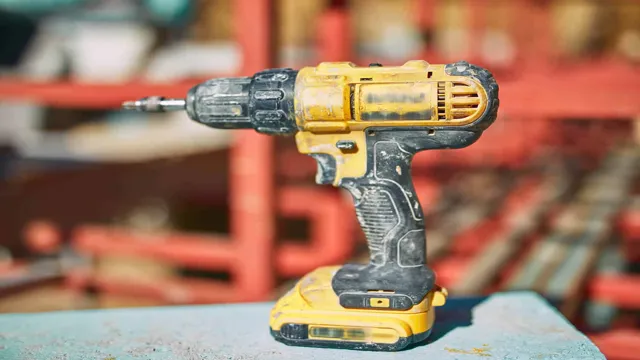
Inspect the Drill
When inspecting a drill, it’s important to take a good look at the damage to assess whether it’s worth repairing or if it’s time for a replacement. Eager to get back to work, you may be tempted to skip this step, but doing so could be costly and dangerous. A visual inspection should include an examination of the cord, plug, switches, and the drill’s body for any cracks, dents, or warping.
Be sure to also check the chuck jaws, which often take a beating during use and may need to be replaced. Check for signs of wear or rust on the teeth of the gears. Gently move the drill from side to side to feel for any looseness in the spindle.
Don’t forget to examine the motor itself, as it’s the heart of the tool. If the drill has visible damage or excessive wear, it may be time to retire it and purchase a new one. Remember, using a damaged drill not only puts you at risk of injury but could also damage your materials and workmanship.
Keep in mind that a little bit of maintenance and proper handling can extend the life of your drill and save you money in the long run.
Dry the Drill Out
If your cordless drill gets wet, don’t panic. It’s essential to dry it out as soon as possible to prevent further damage. The first step is to remove the battery immediately and wipe down the exterior of the drill with a clean, dry cloth.
Next, you’ll want to open up the drill and let it air dry for at least 24 hours to ensure that all the moisture has evaporated. If you’re in a rush, you can use a hairdryer on a low heat setting to speed up the process. Just be careful not to overheat the drill or damage any of the components.
Once the drill is fully dry, you can test it out by installing a fresh battery and running it for a few minutes to make sure everything is working correctly. Remember, prevention is always the best cure, so be sure to keep your drill away from any water sources and store it in a dry place when not in use.
You May Also Love:
Remove the Battery
If your drill has gotten wet, the first thing you should do is remove the battery. This is a crucial step, as leaving the battery in the drill could cause a short circuit and permanently damage the tool. Once the battery is out, make sure the drill is completely dry before attempting to use it again.
You may be tempted to use a hairdryer or another heat source to speed up the drying process, but this can actually do more harm than good. Instead, try leaving the drill in a warm, dry location for several hours or even overnight. If the drill still feels damp after this time, you can use a cloth or paper towel to carefully dry the exterior of the tool.
Just be sure not to apply too much pressure, as this can push moisture deeper into the drill and cause further damage. With a little bit of patience, you can effectively dry out your wet drill and get back to your DIY projects in no time.
Wipe Down the Drill
When it comes to power tools like drills, maintenance should be a top priority to ensure they remain in good working condition. One important step in maintaining your drill is to wipe it down after each use. This will remove any dust or debris that may have accumulated on the tool during use.
A soft, dry cloth can be used to wipe down the drill, ensuring that it remains clean and free of damage. After wiping down the drill, it’s important to dry it out thoroughly. Failure to do so can result in corrosion and damage to the tool.
Avoid using heat to dry the drill, as this can also cause damage. Instead, simply wipe it down with a dry cloth and let it air dry in a cool, dry place. Incorporating these steps into your maintenance routine can help extend the life of your drill and keep it working like new.
Not only will it save you money on repairs and replacements, but it will also ensure safer operation of the tool. By taking care of your drill, you can avoid unwanted accidents and ensure that your power tool remains in top condition for years to come. So, make sure to give your drill a little TLC after each use – it’s a small investment that can pay off in a big way.
Use a Hair Dryer
If your drill has gotten wet or is damp, it’s important to dry it out before using it again to prevent any electrical damage. One easy method for drying out your drill is to use a hair dryer. Start by unplugging the drill and removing the battery.
Then, set the hair dryer to its lowest heat setting and aim it at the drill, moving it back and forth to ensure even drying. It may take a few minutes for the drill to completely dry out, so be patient and avoid using a higher heat setting as this can damage the drill’s internal components. Once the drill is completely dry, you can reattach the battery and use it as normal.
By using a hair dryer, you can quickly and easily dry out your drill without causing any further damage.
Restore the Drill’s Functionality
If your cordless drill gets wet, don’t fret! With proper care and attention, you may be able to restore its functionality. First off, make sure to turn off the tool and remove the battery immediately. Then, disassemble the drill as much as possible and leave it in a warm, dry place for at least 24 hours to allow any moisture to evaporate.
Next, inspect the drill for any signs of damage or corrosion, paying close attention to the battery contacts and electronic components. If there is no visible damage, try powering on the drill with a fully charged battery. If the drill works, it’s a good sign that it’s still in good condition.
However, if it doesn’t work, it might be time to take it to a professional technician for more thorough repairs. Remember to always take precautions to prevent your cordless drill from getting wet, but if it does happen, following these steps can help salvage it and save you from the cost of a new tool.
Use a Lubricant
If you’re having trouble with your drill not working correctly, one simple solution could be to use a lubricant. Over time and with frequent use, the moving parts of a drill can become worn and start to stick, causing the drill to stop functioning as it should. Applying a lubricant to the moving parts can help to reduce friction, making it easier for the parts to move and allowing the drill to function properly again.
When choosing a lubricant, it’s important to select one that is designed for use on power tools and will not damage the drill’s internal components. Using a lubricant can be a quick and easy fix to get your drill back up and running again, so it’s definitely worth considering if you’re experiencing issues with your power tool.
Seek Professional Help, If Necessary
When it comes to restoring the functionality of your drill, seeking professional help may be necessary. While you can try to troubleshoot the issue on your own, sometimes the problem is more complex than it appears and requires the expertise of a professional. A skilled technician can diagnose and fix issues more efficiently, saving you time and potentially costly mistakes.
They can also help you maintain your drill to prevent future issues from arising, ultimately prolonging the lifespan of your tool. Don’t hesitate to reach out to a professional if you’re unsure of how to address an issue with your drill. They have the knowledge and tools necessary to restore your drill to working order.
By seeking professional help, you’ll get back to working with a reliable and efficient tool in no time.
Conclusion
When it comes to cordless drills and water, the two don’t mix well. If your drill gets wet, the first thing you should do is de-energize it immediately by removing the battery or unplugging it from the power source. Next, disassemble the drill and dry all the parts thoroughly using a towel or a hairdryer.
But let’s face it, accidents happen no matter how careful we try to be. So, if your cordless drill gets wet, just remember the mantras of DIYers – “water and power don’t mix” and “better safe than sorry.” Don’t take any chances, follow the steps we outlined above, and you’ll be drilling away again in no time (with dry hands, of course).
As the old saying goes, prevention is better than cure. So, take care of your tools, keep them away from water, and they’ll last longer and serve you better. Happy drilling!”
FAQs
Can a cordless drill be used in wet conditions?
No, it is not safe to use a cordless drill in wet conditions.
What should I do if my cordless drill gets wet?
If your cordless drill gets wet, immediately remove the battery and dry it off with a towel. Allow the drill to completely dry out before using it again.
Can I use a hairdryer to dry my wet cordless drill?
No, using a hairdryer to dry your cordless drill may cause damage to the electrical components. Instead, allow the drill to air dry in a warm and dry location.
Is it safe to plug in a wet cordless drill?
No, it is not safe to plug in a wet cordless drill as it may cause a short circuit or electrical shock. Allow the drill to completely dry out before plugging it in.
Should I dismantle my wet cordless drill for cleaning?
No, dismantling your wet cordless drill for cleaning may cause further damage to the internal components. Allow the drill to completely dry out before using it again.
Can I use a rust dissolver on my wet cordless drill?
No, using a rust dissolver on a wet cordless drill may cause further damage to the internal components. Allow the drill to completely dry out before attempting to remove any rust.
How can I prevent my cordless drill from getting wet in the future?
You can prevent your cordless drill from getting wet by storing it in a dry and secure location and avoiding using it in wet conditions. Additionally, you can invest in a waterproof storage case for your drill to protect it from the elements.

